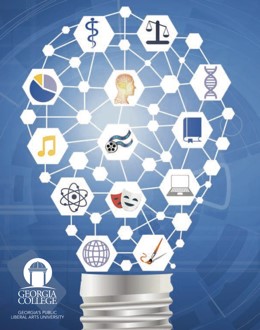Abstinence Education: When You Are Late In A Different Way
Abstract
Abstinence Education: When You Are Late In A Different Way Aanjae Patterson & Lillian Echols Abstract This evidenced based project evaluates whether teenagers who receive contraceptive sex education are at a decreased risk of becoming pregnant compared to teenagers with abstinence only sex education. The student researchers reviewed CINHAL and ProQuest using the search terms: teenage pregnancy and sex education and abstinence and contraceptive use. Information was focused using parameters of pregnancies only in females aged 13-19. A total of 314 articles were found. After review of the articles, eight quantitative studies and five qualitative studies and various government websites were found to fit the topic. While there has been an overall decrease in the amount of teenage pregnancies countrywide due to the increased use of contraceptives, the rate of teenage pregnancies is the highest of any developed country. The rates have also stayed consistently higher in states with abstinence only sex education versus states that are allowed to educate on contraceptive use. Nurses may use this information to help decrease pregnancy rates in teenagers by advocating for increased contraceptive education, creating sex education courses that include all types of contraception and increasing the access to contraceptives through clinics geared towards adolescents. Many states are resistant to contraceptive sex education, thus the nurse needs to advocate for their adolescent patients and explain the benefits versus disadvantages involved.
Abstinence Education: When You Are Late In A Different Way
Abstinence Education: When You Are Late In A Different Way Aanjae Patterson & Lillian Echols Abstract This evidenced based project evaluates whether teenagers who receive contraceptive sex education are at a decreased risk of becoming pregnant compared to teenagers with abstinence only sex education. The student researchers reviewed CINHAL and ProQuest using the search terms: teenage pregnancy and sex education and abstinence and contraceptive use. Information was focused using parameters of pregnancies only in females aged 13-19. A total of 314 articles were found. After review of the articles, eight quantitative studies and five qualitative studies and various government websites were found to fit the topic. While there has been an overall decrease in the amount of teenage pregnancies countrywide due to the increased use of contraceptives, the rate of teenage pregnancies is the highest of any developed country. The rates have also stayed consistently higher in states with abstinence only sex education versus states that are allowed to educate on contraceptive use. Nurses may use this information to help decrease pregnancy rates in teenagers by advocating for increased contraceptive education, creating sex education courses that include all types of contraception and increasing the access to contraceptives through clinics geared towards adolescents. Many states are resistant to contraceptive sex education, thus the nurse needs to advocate for their adolescent patients and explain the benefits versus disadvantages involved.


